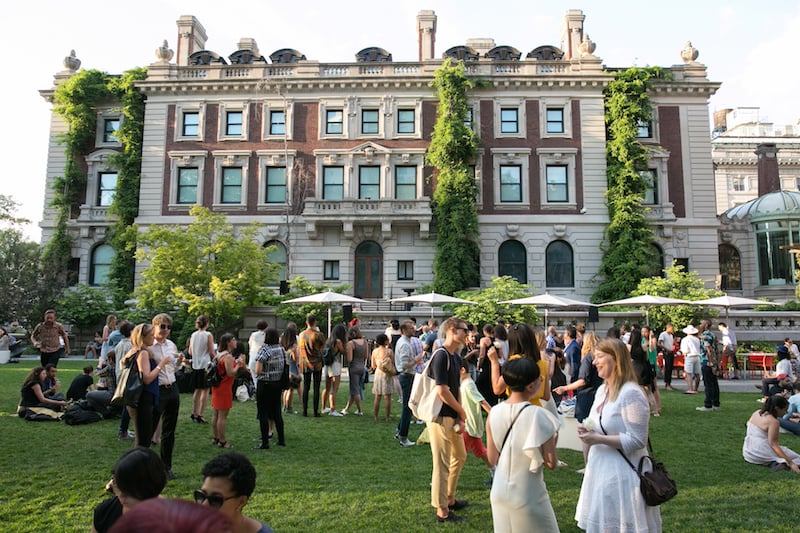Politics
The Smithsonian Is Using Surplus Funds to Stay Open During the Government Shutdown—For Now
The Smithsonian will try to bridge the gap until a new budget agreement is reached.

The Smithsonian will try to bridge the gap until a new budget agreement is reached.

Sarah Cascone

As the shutdown of the US government enters its third day, the Smithsonian Institute will remain open, thanks to a rainy-day surplus fund. The federally administered institution is welcoming visitors at its many museums—including the Cooper Hewitt Smithsonian Design Museum and the National Museum of the American Indian, both in New York—as well as at the National Zoo in Washington, DC.
The shutdown was triggered Saturday morning when the Senate was unable to reach a budget agreement, but the stalemate could come to an end as early as today with a vote that could pass a stopgap budget to cover the next three weeks, as reported by CNN. Democrats and Republicans had hit an impasse over the expiration of Deferred Action for Childhood Arrivals (or DACA) legislation protecting undocumented immigrants brought to this country as children.
Update: The Smithsonian, including its museums, research centers & the National Zoo, will be OPEN Monday, Jan. 22.
The Smithsonian can use prior year funds still available to us to do so. We will update our status beyond Monday as soon as we know. #governmentshutdown
— Smithsonian (@smithsonian) January 20, 2018
The government is still hoping to avoid a repeat of the last shutdown in 2013, which lasted 16 days. According to government estimates, the Smithsonian, closed for the duration, lost $2.8 million in revenue. Collectively, the Smithsonian’s 19 museums are thought to have turned away some 800,000 visitors in that time period.
On Twitter, the Smithsonian noted that it “can use prior year funds still available” in order to keep the lights on despite the current shutdown. It is unclear if the additional funds will extend beyond today.
Unlike the 2013 shutdown, National Parks are also open today, albeit with fewer park rangers on hand to assist guests. New York State has also stepped in to reopen the Statue of Liberty and Ellis Island, which were shuttered over the weekend. In announcing the state’s decision to cover the costs during the shutdown, governor Andrew Cuomo stressed the importance of the monuments’ continued operation. Speaking of the Statue of Liberty, he wrote in a tweet, “We will not stand by as this symbol of freedom and opportunity goes dark.”
New York State will reopen the Statue of Liberty and Ellis Island. We will not stand by as this symbol of freedom and opportunity goes dark. pic.twitter.com/s73nTc8ipK
— Andrew Cuomo (@NYGovCuomo) January 21, 2018
The official protocol from the Office of Management and Budget calls for the Smithsonian, as well as the United States Holocaust Memorial Museum and the National Gallery of Art, to close to the public. OMB director Mick Mulvaney told the press that the current shutdown is less “weaponized” than the 2013 one, accusing the Obama administration of closing popular attractions such as the Smithsonian and the parks in order to maximize the negative effects. (Representatives for Barack Obama did not immediately respond to artnet News’s request for comment.)
It remains unclear how long a sense of normalcy can be maintained in the absence of a new budget. Should the shutdown continue, and the Smithsonian run out of surplus funds, only 688 of a total of 4,063 federal employees will be retained “under the plan to protect life and property.”
“Security and maintenance and zoo staff were exempt from furlough,” a representative from the Smithsonian told artnet News of the 2013 shutdown in an email. “All federal employees are on furlough and follow the same rules as all federal staff in agencies. In the past, they were paid at a later date.”
The US Commission of Fine Arts, the National Endowment for the Arts, and the National Endowment for the Humanities have all temporarily ceased operations during the shutdown.